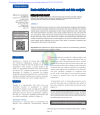



This included now-familiar concepts to statisticians, such as: Pearson developed a more complete mathematical framework for hypothesis testing in the 1920s. The statistical approach he derived (now called a one-sample t-test) was subsequently built upon by R. Gosset, more commonly known by his pseudonym "Student," was required to take small samples from a brewing process to understand particular quality characteristics. The practice of employing a small, representative sample to make an inference of a wider population originated in the early part of the 20th century. However, there are some practical and statistical considerations to keep in mind when choosing a statistical method to use.Įxample Considerations When Using Statistics/Statistical Methods Planning, conducting, analyzing, and interpreting controlled tests to evaluate the factors that may influence a response variable. Practitioners may then seek ways to remove that variation from the process. SPC identifies when processes are out of control due to special cause variation (variation caused by special circumstances, not inherent to the process). Monitors, controls, and improves processes through statistical techniques. The conclusion is to either reject or fail to reject the null hypothesis.ĭetermines a mathematical expression describing the functional relationship between one response and one or more independent variables. The null hypothesis is a "straw man" used in a statistical test. Two hypotheses are evaluated: a null hypothesis (H 0) and an alternative hypothesis (H 1). The use of statistical methods in quality improvement takes many forms, including: They are a formalized body of techniques characteristically involving attempts to infer the properties of a large collection of data. Statistical methods in quality improvement are defined as the use of collected data and quality standards to find new ways to improve products and services. Statistics are defined as a field that involves tabulating, depicting, and describing data sets.


 0 kommentar(er)
0 kommentar(er)
